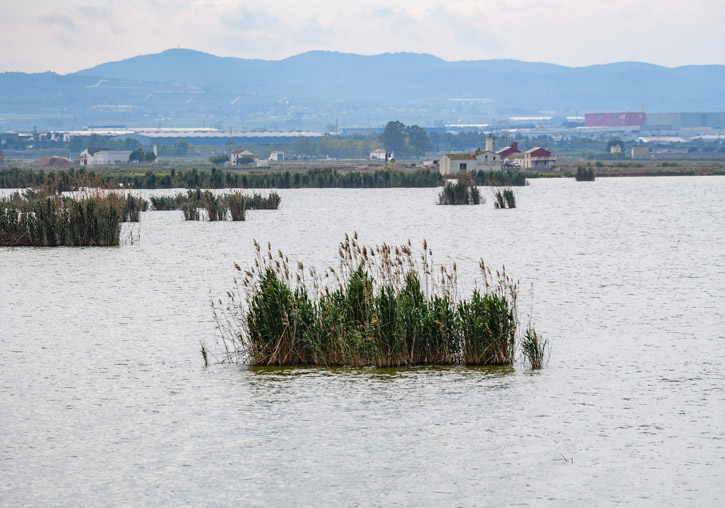Mediterranean wetlands as carbon sinks to mitigate climate change
- Scientific Culture and Innovation Unit
- October 22nd, 2021

Specialists from the University of Valencia (UV) and the Global Nature Foundation integrated into the European project LIFE Wetlands4Climate, which values wetlands as carbon sinks and reducers of the amounts of greenhouse gases (GHG) in the atmosphere, claim Mediterranean wetlands as allies to face the challenge of mitigating climate change.
The International Day Against Climate Change is celebrated on October 24, at the gates of the annual summit held by the United Nations Convention on Climate Change (COP26) in Glasgow. The data and reports force ambitious decisions to be taken to avoid irreversible changes in the climate and mitigate the effects of the changes already produced. Thus, the latest conclusions of the Intergovernmental Group of Experts on Climate Change (IPCC) estimate that the reduction of GHG emissions should be 45% in 2030 with respect to 2010 levels in order not to exceed an increase of 1.5 degrees in global temperature relative to pre-industrial levels.
In this context, the European project LIFE Wetlands4Climate analyses the role of the potentially most remarkable ecosystems in mitigating climate change: Mediterranean wetlands. “The knowledge generated in this project will allow immediate action, consisting of applying those management and management measures that, while maintaining the ecological health of the wetlands, increase their carbon retention capacity and contribute to a greater extent to the mitigation of climate change”, explains Antonio Camacho, professor of Microbiology and Ecology at the UV.
For her part, Vanessa Sánchez, an expert from the Global Nature Foundation, assures: “wetlands in a good state of conservation can be sinks and reduce the amount of GHG in the atmosphere, on the other hand, if they are altered, they can become large emitters”.
In September, the UN warned that, if the current climate plans presented by the different countries of the world to face the climate emergency are maintained, emissions would be reduced by 12% in 2030, far from the targets set. These data, collected in the Synthesis Report of Nationally Determined Contributions (NDC) will be updated on October 25 and will integrate the latest commitments acquired before COP26, where this percentage is expected to increase.
“It has been proven that nature plays a fundamental role in climate regulation. Ecosystems such as forests and wetlands have a great capacity to exchange carbon with the atmosphere, and are capable of retaining carbon and reducing the concentration of GHG in the atmosphere. But time plays against the natural solutions we have. Changes in nature are slow, even putting into practice the appropriate measures, it could take “between 20 and 30 years to see global temperatures stabilise”, says Vanesa Sánchez.
European project
Wetlands4Climate is a project supported by the European Commission through the LIFE financial instrument. A team from the University of Valencia, coordinated by Professor Antonio Camacho, leads the research. The proposal, financed with two million euros, is managed by the Global Nature Foundation and executed in collaboration with partner entities such as the EFE Agency, the Valencia Climate and Energy Foundation, and the Cavanilles Institute for Biodiversity and Evolutionary Biology of the UV. In its first phase, the project is supported by the Ministry for the Ecological Transition and the Demographic Challenge, through the Biodiversity Foundation; the State Research Agency of the Government of Spain; the Department of Agriculture, Rural Development, Climate Emergency and Ecological Transition of the Valencian Government, the Regional Government for the Conservation of Natural Areas and Devesa-Albufera of the Valencia City Council and the Torreblanca City Council.
Annex photo caption:
- Antonio Camacho, expert in functional ecology of wetlands and climate change, and professor of Microbiology and Ecology.
File in: Internacionalització recerca , Facultat de Ciències Biològiques , Grups de recerca , Cultura Científica , Difusió i comunicació científica , Investigació a la UV



















